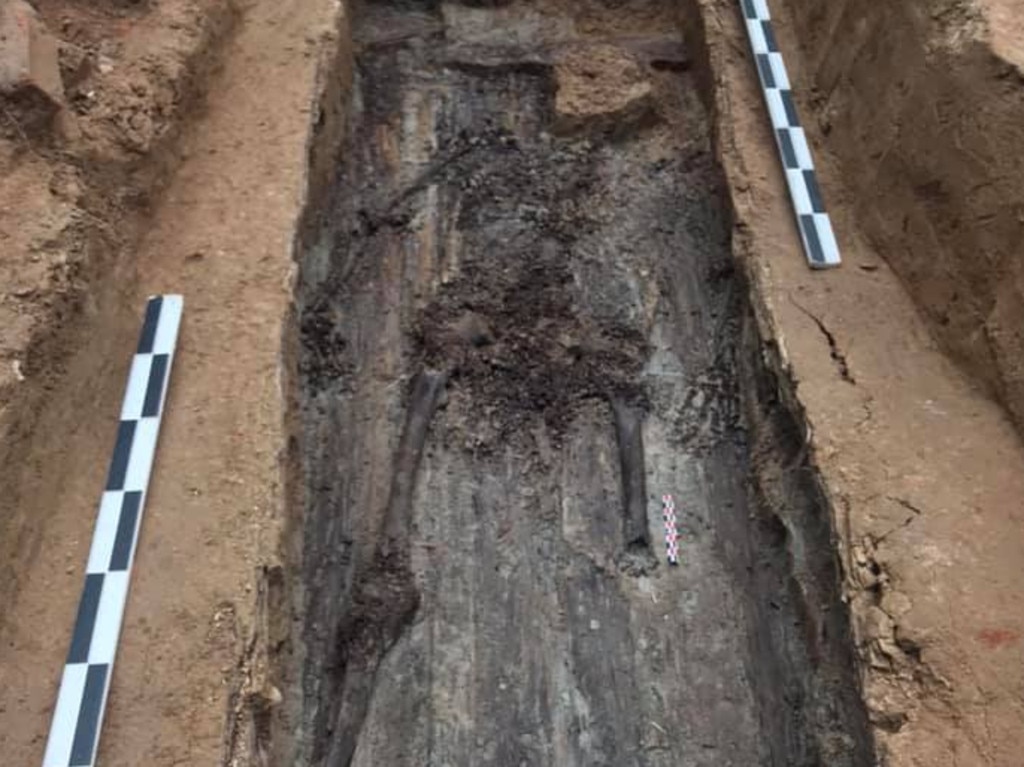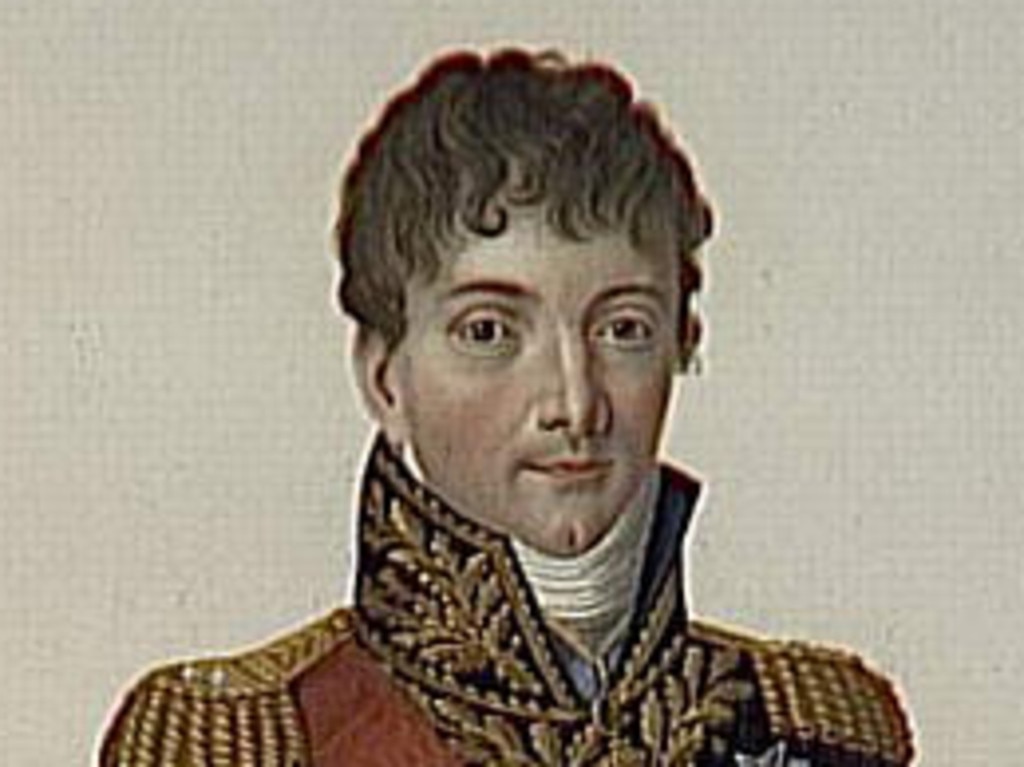Body of French general Charles Etienne Gudin, discovered by archaeologists
A general from one of the most famous failed campaigns of all time has been discovered by archaeologists under a dance floor in Russia.
A one-legged skeleton discovered underneath a dance floor in Russia could reveal a centuries-old mystery about Napoleon’s favourite general.
Researchers have discovered a body believed to be that of a general who died during Napoleon’s 1812 campaign in Russia.
Now they’ve asked a French laboratory to carry out DNA tests on his remains.
General Charles-Étienne Gudin was hit by a cannonball during the Battle of Valutino on August 19, 1812 near Smolensk, a city west of Moscow close to the border with Belarus.
His leg was amputated and he died three days later from gangrene, aged 44.
The French army cut out his heart, now buried at the Pere Lachaise cemetery in Paris, but the site of the rest of his remains was never known, until researchers uncovered the likely skeleton this summer.
According to the BBC, the skeleton, believed to be that of Gudin, was discovered in July in a wooden coffin in a park beneath building foundations — reportedly a former dance floor.
Researchers have said they would reveal the results of tests on the remains and solve the 200-year-old mystery on Thursday, but archaeologists involved in the dig have indicated wounds on the body, as well as its size and age, left little doubt it was the celebrated general.

“As soon as I saw the skeleton with just one leg, I knew that we had our man,” head of the archaeological team Marina Nesterova said.
But at a press conference they said the final results would have to come from a laboratory in France.
“For this to be validated 100 per cent, it must be done in France, not Russia,” said project leader Pierre Malinowski, a historian and former soldier with ties to the French far-right and support from the Kremlin.
Malinowski said he had asked the Marseille Forensic Institute to repatriate the body and run DNA tests.

Gudin is said to have been one of Napoleon’s favourite generals and the two men attended military school together. His name is engraved on the Arc de Triomphe monument in Paris.
The search for his remains has been underway since May.
“My deepest conviction is that it’s him,” said Alberic d’Orleans, a descendant of the general who flew into Moscow.
“We hope he can be welcomed back to France with due honours,” and be buried alongside Napoleon at the Invalides complex in Paris, he added.
Gudin’s death near Smolensk came near the beginning of Napoleon’s march toward Moscow, 400 kilometres further east.
Napoleon had hoped to defeat the Russian army at Valutino and sign an advantageous treaty, but it managed to escape and Russian Tsar Alexander refused to discuss peace.
Napoleon’s march on Russia ended in a disastrous retreat as the Russians used scorched earth tactics and even ordered Moscow to be burnt to sap Napoleon’s resources.



